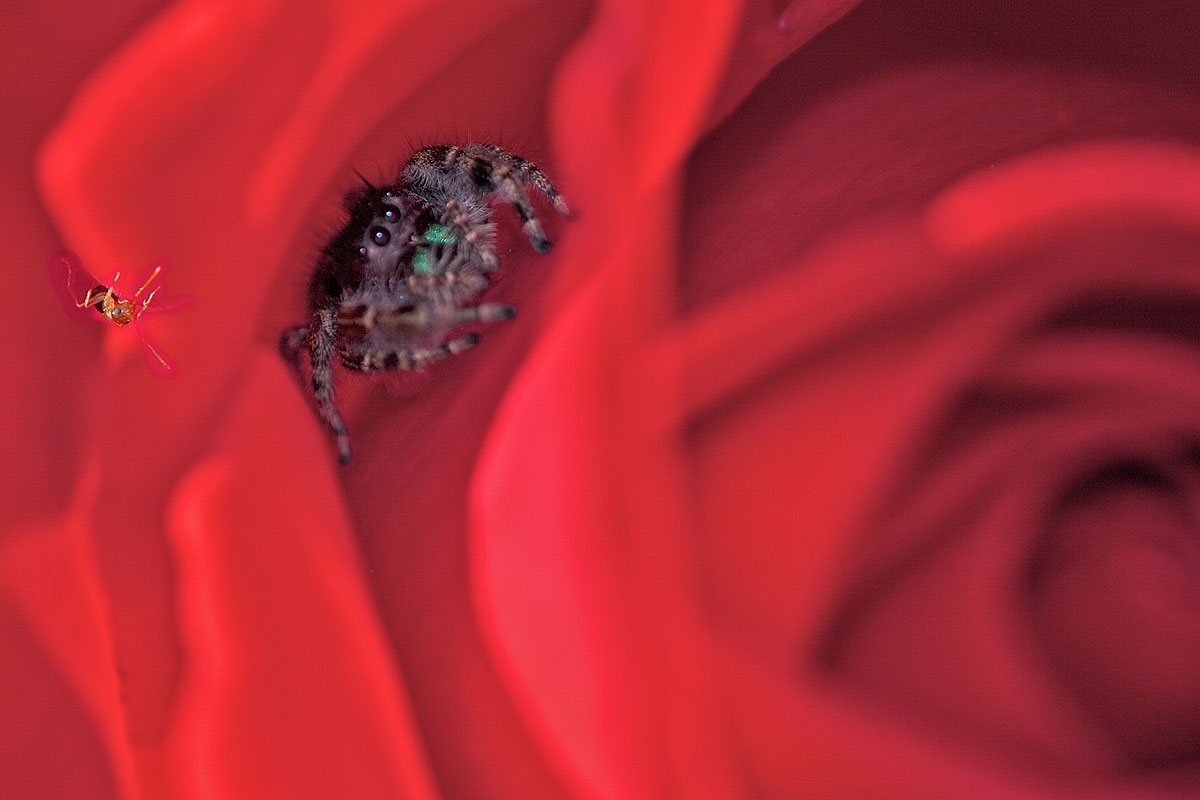
| Primordial Light: Phylum Arthropoda Page 2 | ||
| Consider this from “The Insects” Fourth Edition, by Gullen and Cranston: “Some estimates... imply that, to a near approximation, all organisms can be considered to be insects;” i.e., there are so few other animals on earth relative to the population of insects (and other land arthropods), that the rest of us do not count, statistically. |
||
| June 26, 2011: My weather still is not suitable for astrophotography, so I continue to photograph bugs, flowers, and whatever else I can find in nature. I like being able to produce decent photos without staying up all night and then spending hours in post-processing! | ||
| The photos on this page were all made with a Canon 5D Mark II 21-megapixel DSLR with one of two Canon macro lenses: a 100mm or a 180 mm. All were made with electronic flashes—either a Canon Ring Lite (most of the 100mm photos) or a Canon Speedlite 580EX II with a Gary Fong diffuser. I’m just now beginning to use a new versatile and lightweigh carbon-fiber tripod, a Gitzo GK2550XQR Explorer. | ||
|
• Many of my recent photos may also be seen on my Flickr page at http://www.flickr.com/photos/primeval.
• I am pleased that some of these photos have been accepted for use on the Encyclopedia of Life site at http://www.eol.org. • Some of my arthropod photos may be seen at Bug Guide http://www.bugguide.net. • I owe the people at Bug Guide a debt of gratitude for helping me identify many of the species that I have photographed. |
||
| Phidippus audax, the Bold Jumping Spider, May 18. 2011 | ||
| Flowers are arthropod zoos; they contain a remarkable variety of animal life. And for every little creature it seems that there is another creature just waiting to eat it. This spider did not get the ant, however, at least not this time. The ant turned around and went the other direction. | ||
 |
||
| Musca domestica, nobody’s favorite, May 31, 2011 |
| If we were in the film days I would have used a lot of film on this house fly. He was not captive (except by a large screened porch) and I made many blurry photos to get one or two acceptable ones. |
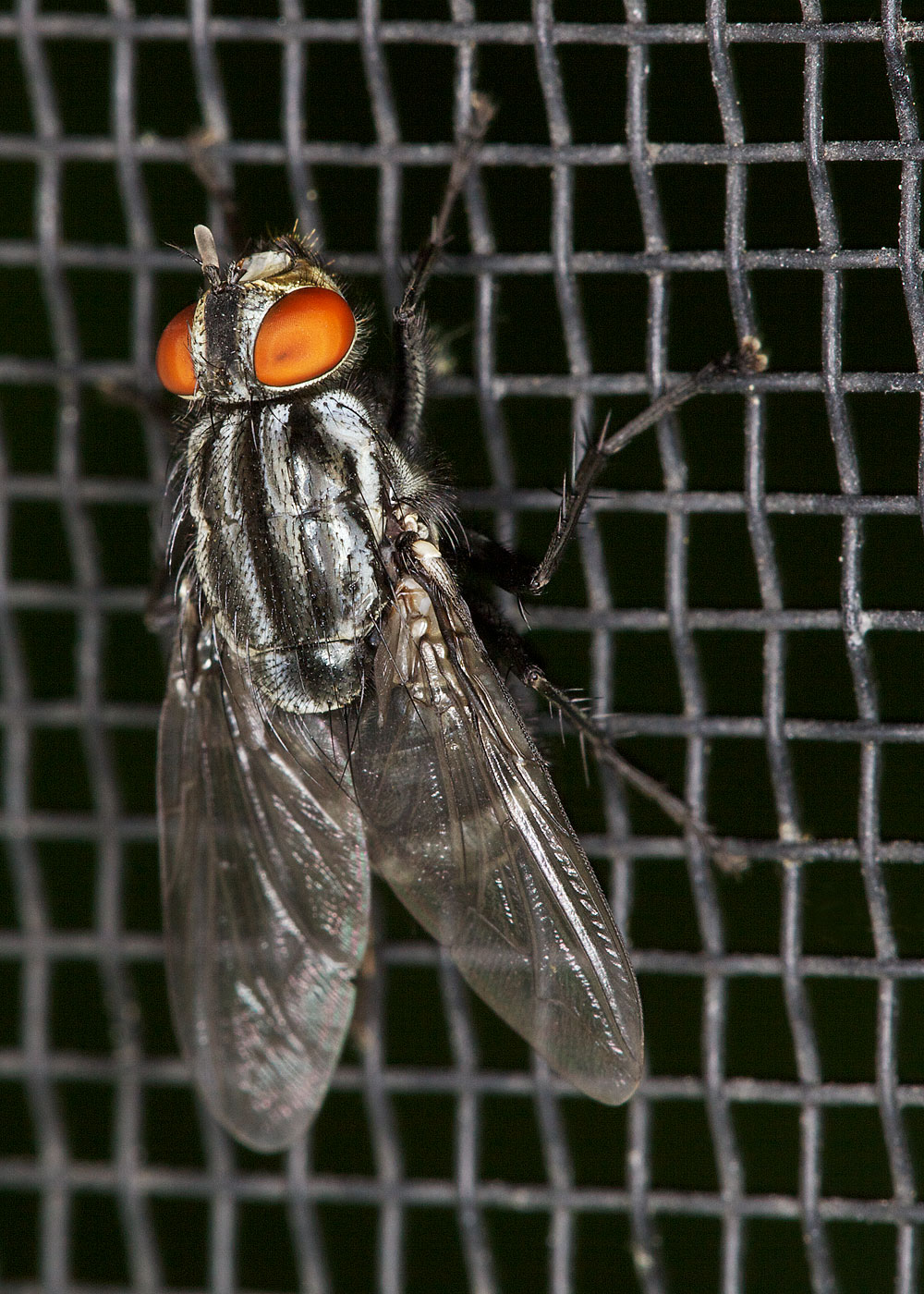 |
| Cerma cerintha, Tufted Bird-Dropping Moth. | ||
| Human perception is inexplicable! Someone thought this moth looked like a blob of bird droppings, and so named it. I think it looks regal in a cloak of rarest embroidered silk with tufts, tassels, and fine fringes. I propose to give Cerma cerintha the popular name Princely Cloak Moth. | ||
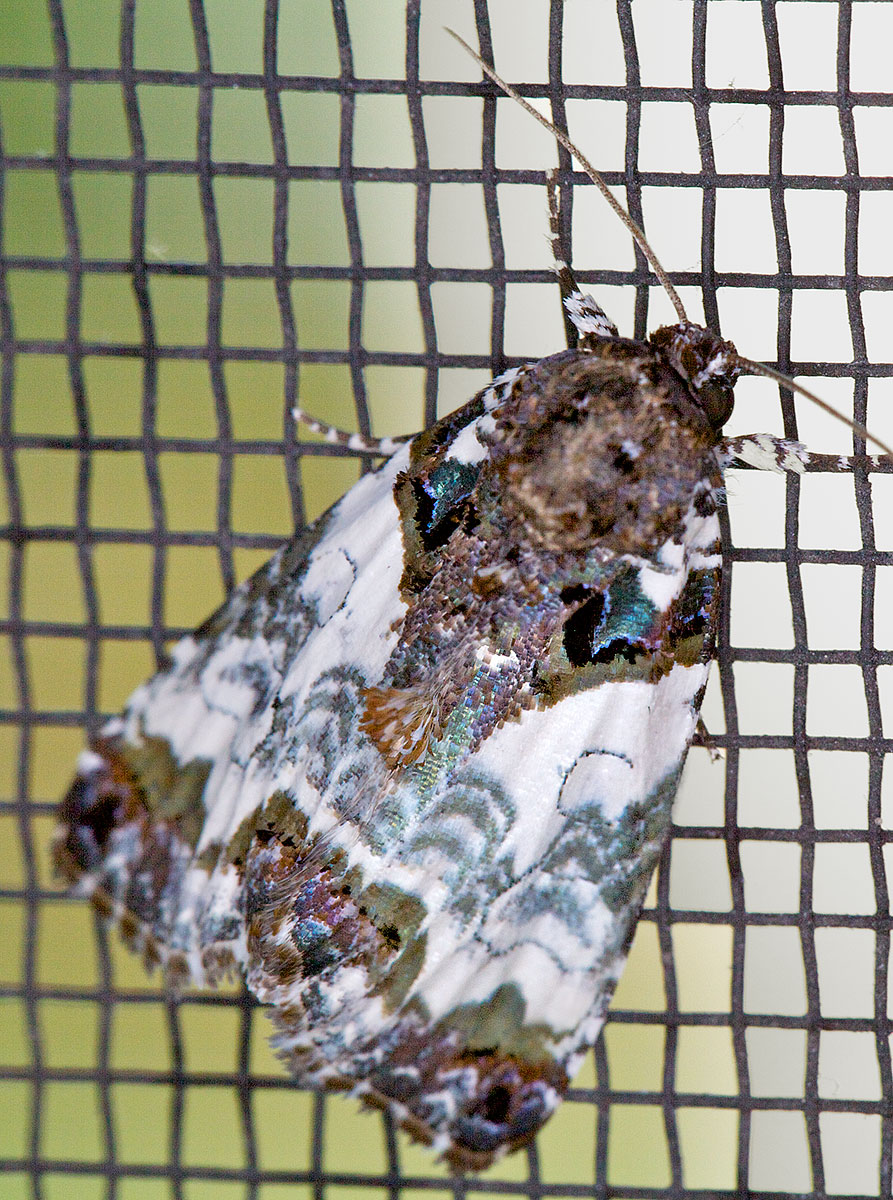 |
||
| Two views of Diestrammena asynamora, the Greenhouse Stone Cricket, June 13, 2011 | ||
| To Disney fans, this is Jiminy Cricket. Otherwise, it’s the Greenhouse Stone Cricket, or Camel Cricket. This species is considered to be a pest in greenhouses. | ||
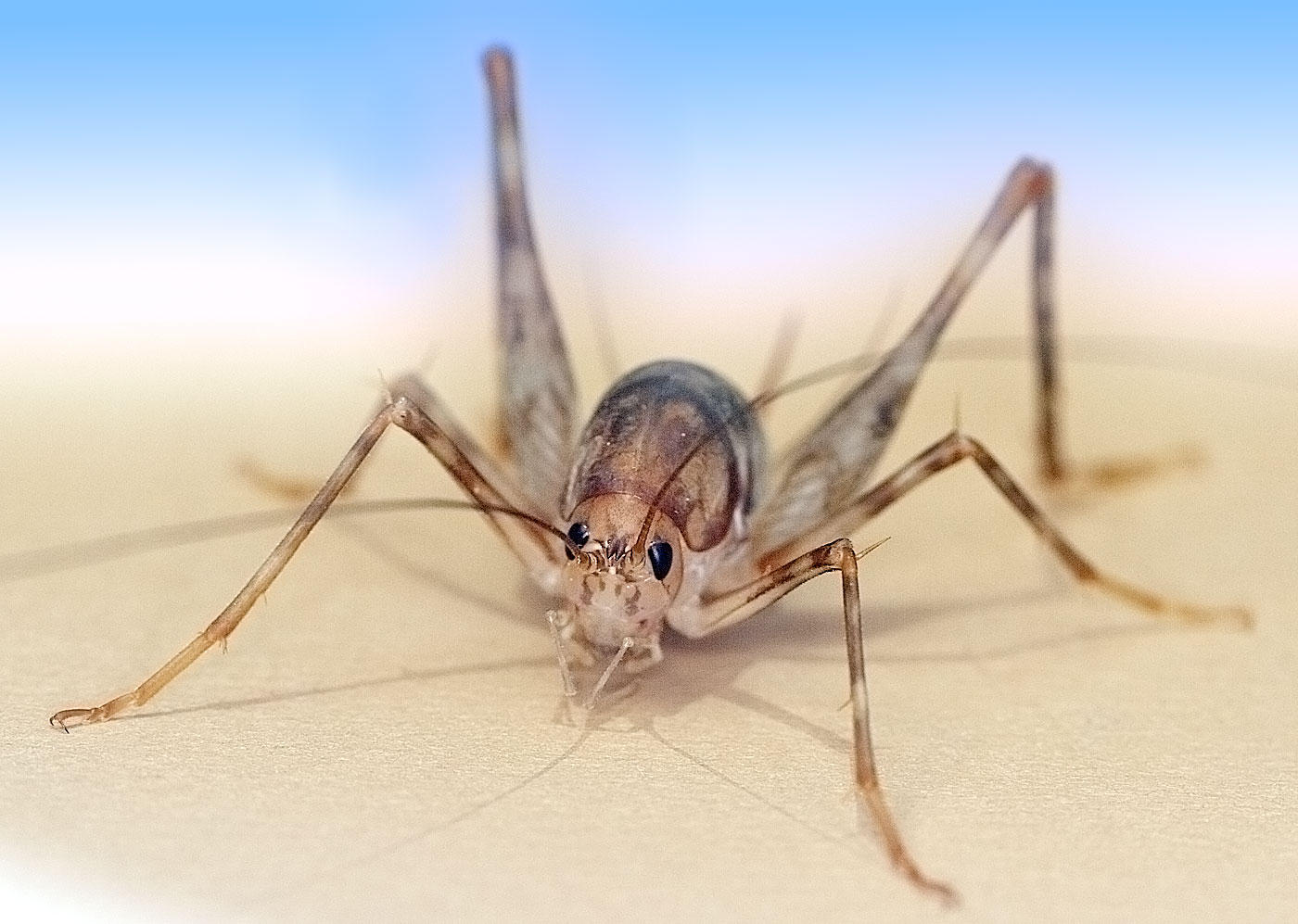 |
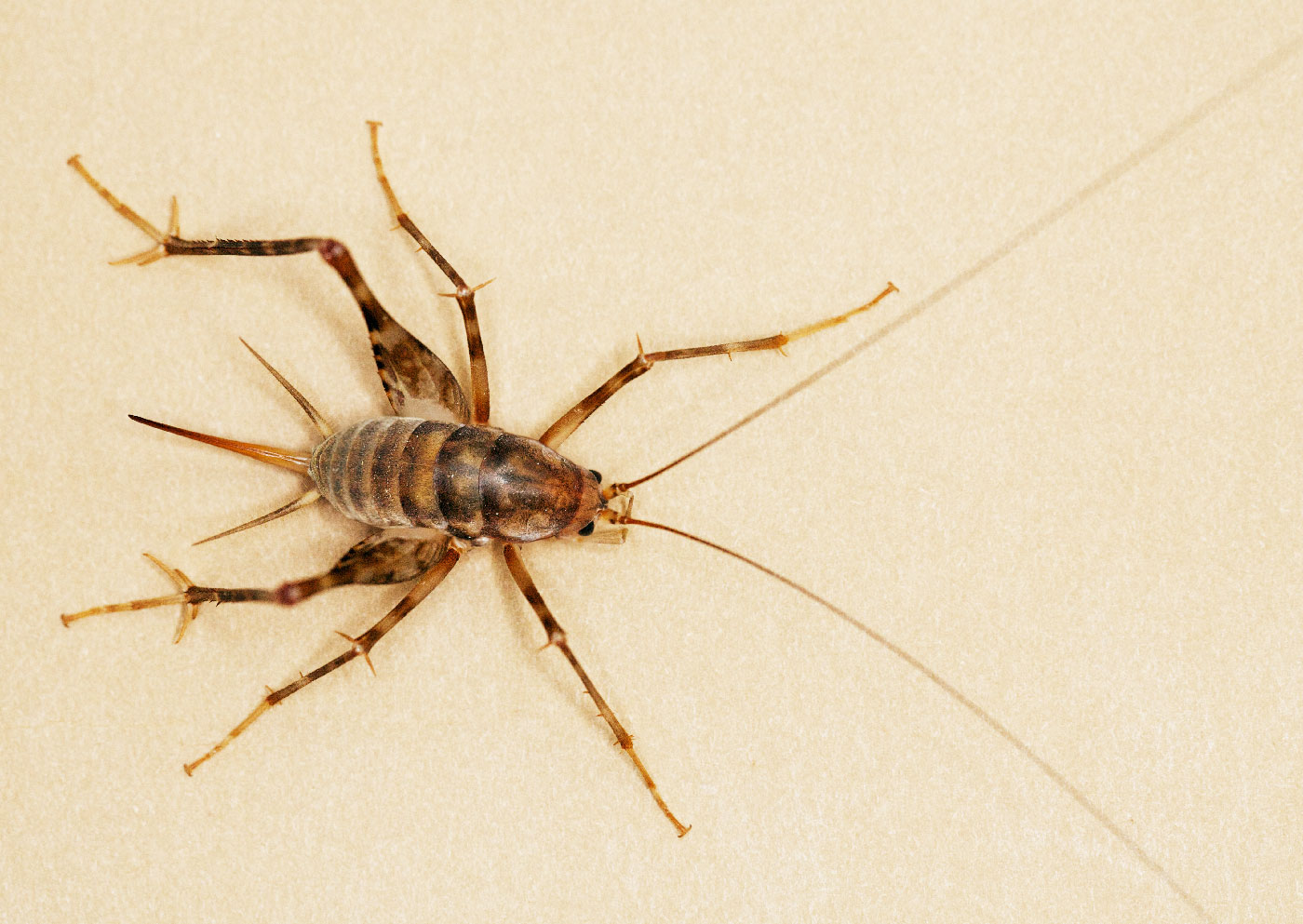 |
||
| The dorsal view above appears in the Kaufman Field Guide to Nature of New England. | ||
| Paonias myops, Small-Eyed Sphinx Moth, May 22, 2011 | ||
| This is a large moth with a body more than four cm in length. Leona rescued this moth from being trapped on the screened porch and it posed on her hand, perhaps to thank her, before flying off. The gold highlights on his wings looked like real gold leaf. | ||
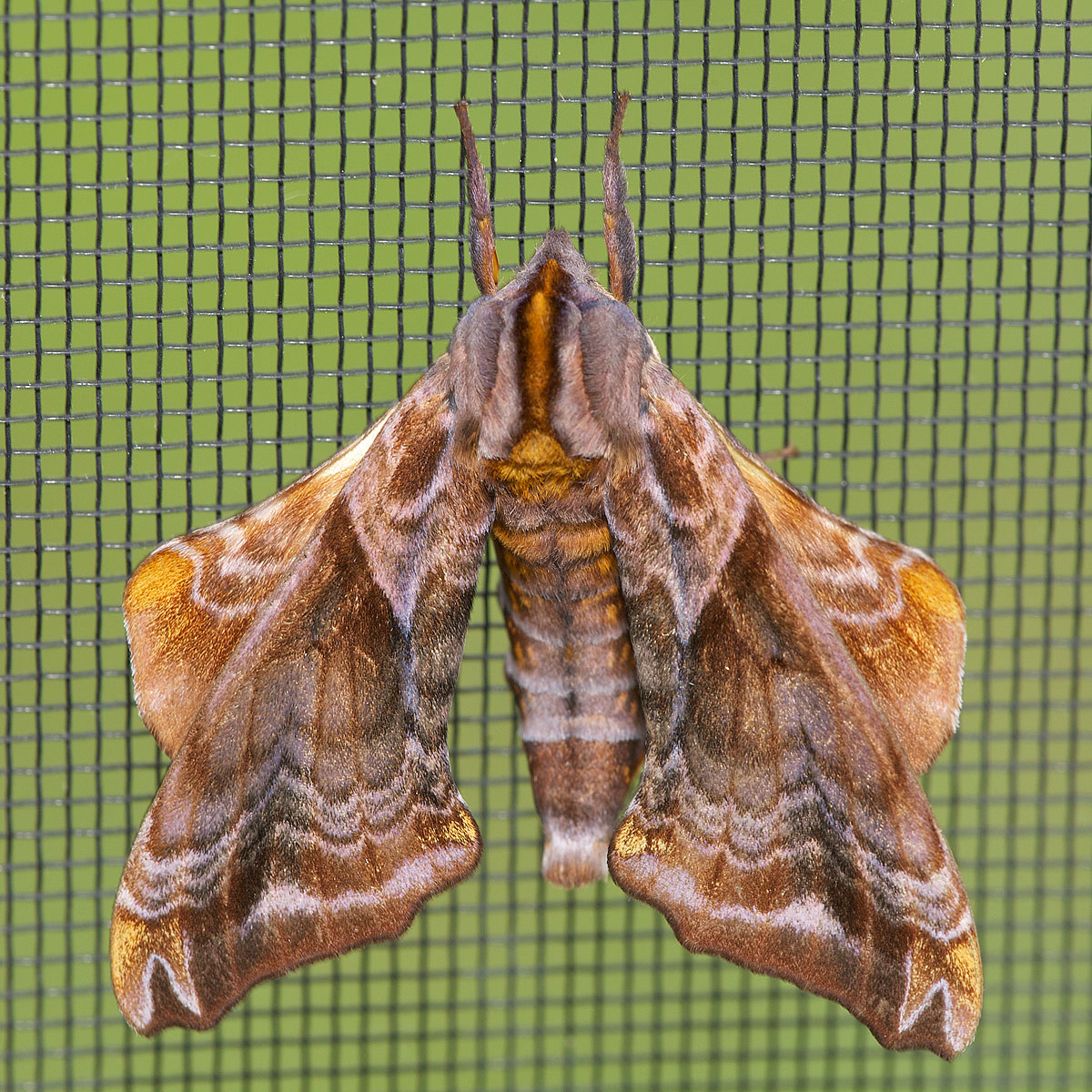 |
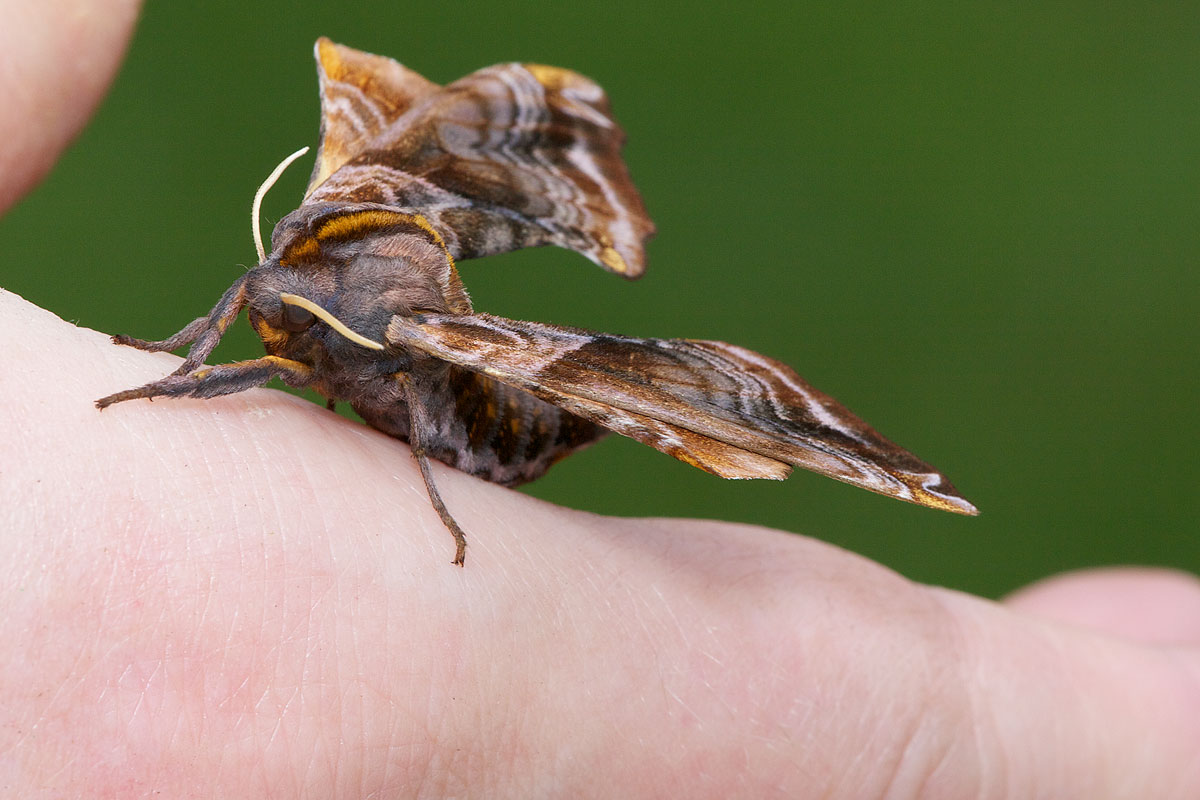 |
| This extreme close-up reveals that Paonias myops also wears a rich cloak. | ||
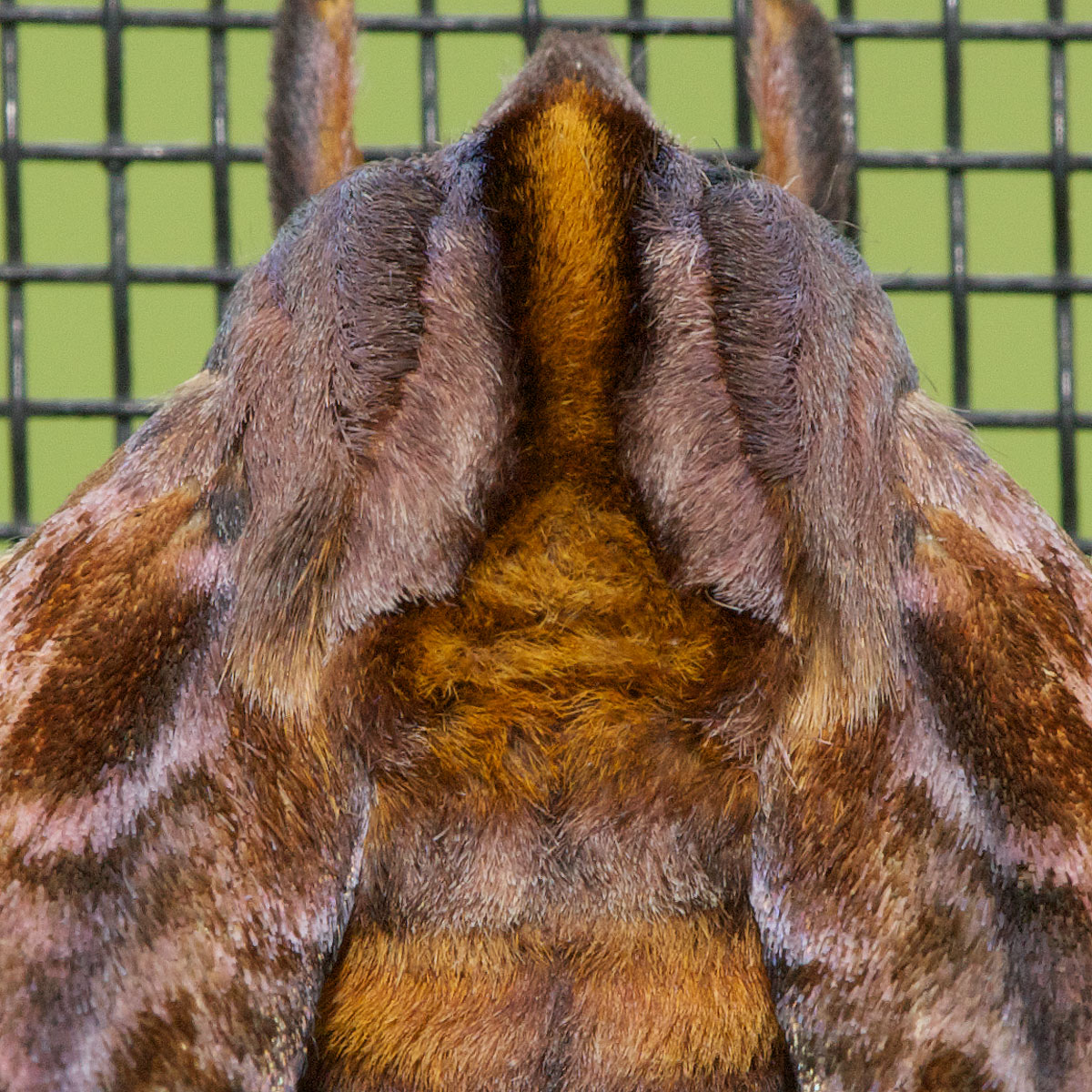 |
||
| Papilio polyxenes asterius, Black Swallowtail, June 7, 2011 | ||
| We planted a small butterfly garden on June 7. It consists of two cultivars of Buddleja davidii, some marigolds, and some zinnias. This individual arrived for a snack as we finished and stepped back to admire our work (and wonder if we would ever see a butterfly there). The second photo is a detail from the dorsal (back) side of this individual’s wing. | ||
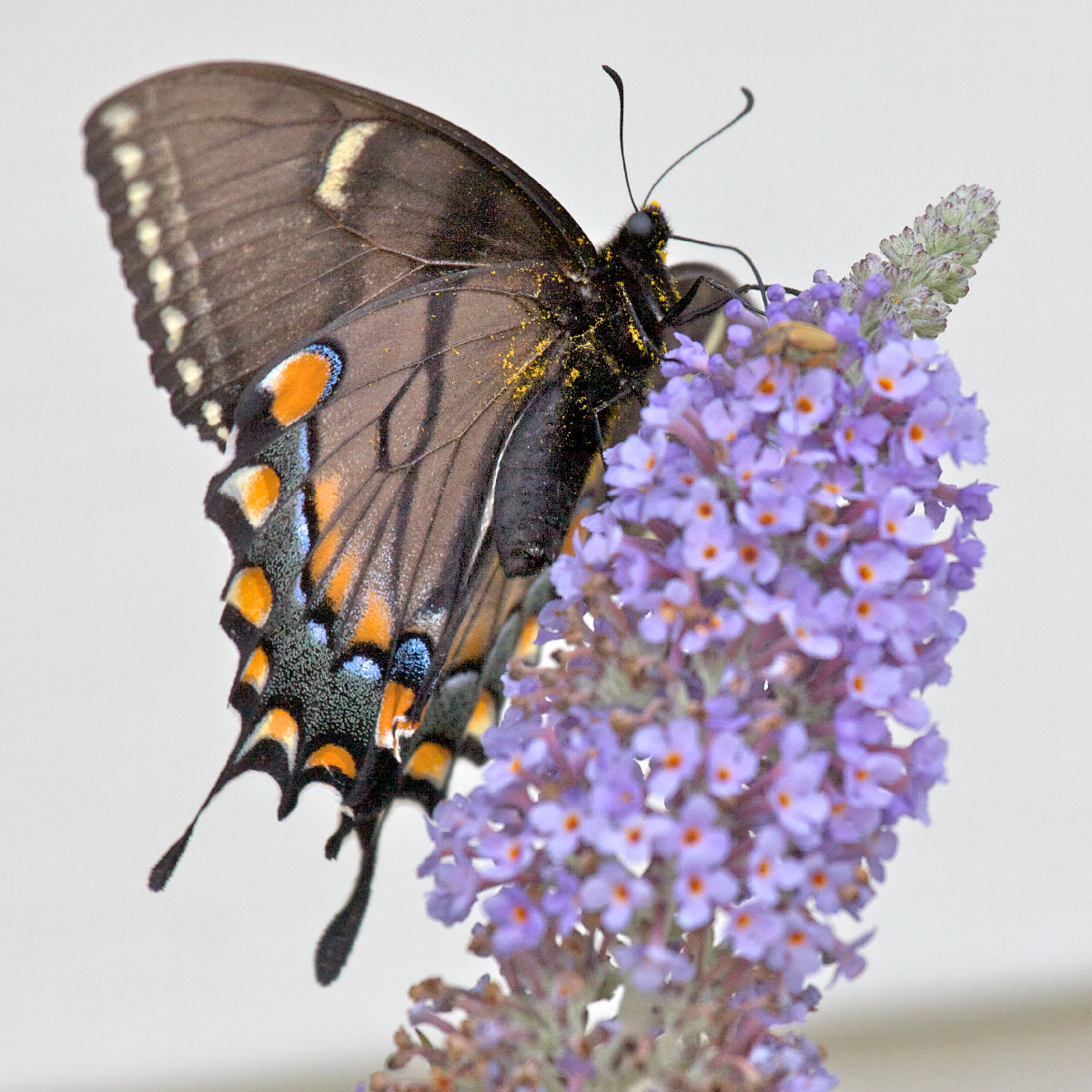 |
||
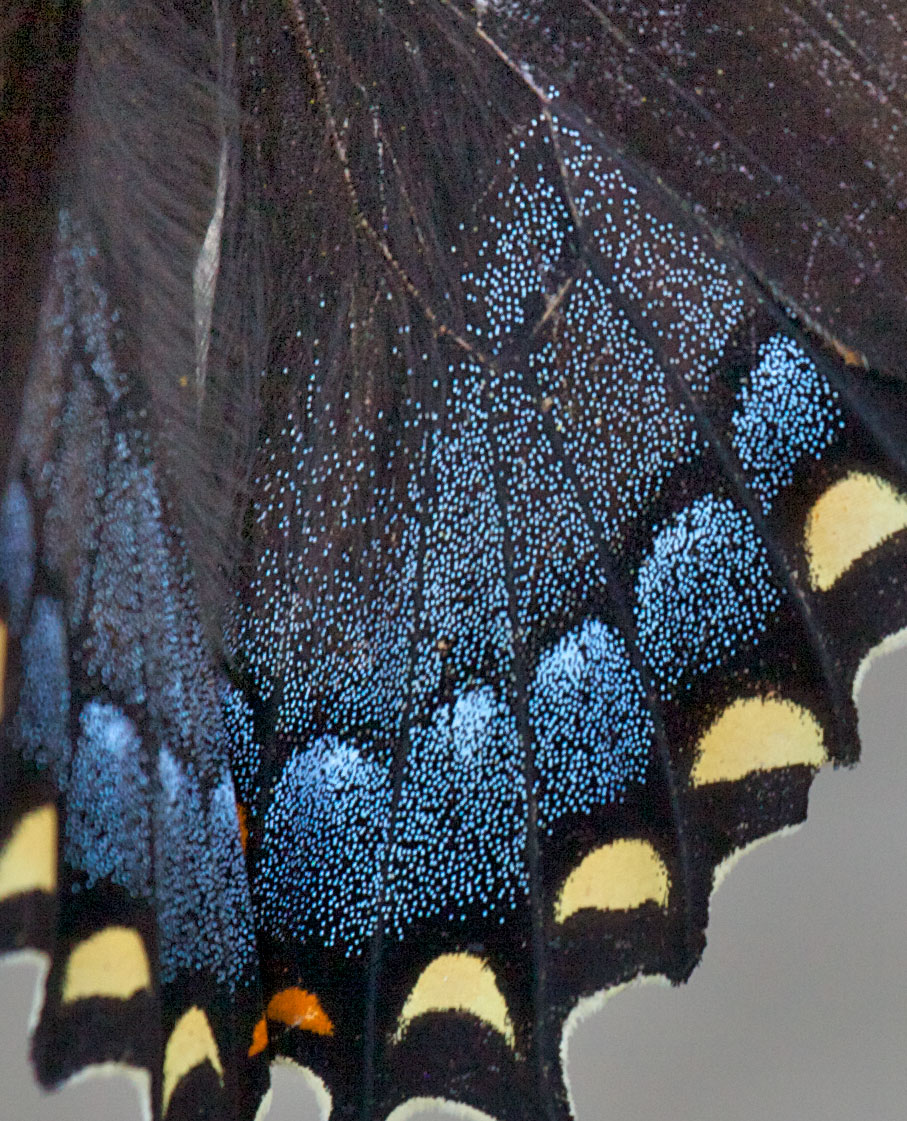 |
||
Saving the Best for Last... |
||
Or at least I think that the next two photos are the best on this page. |
||
| Polistes dominula, European Paper Wasp, June 17, 2011 | ||
| The group in this photo includes a “foundress,” or queen, who has deposited ova in the brood cells. The foundress is accompanied in capping the brood cells by five assisting females. The “paper” is plant fiber mixed with saliva. The European paper wasp was introduced into North America in New Jersey in 1968. That this is an invasive species is unquestioned, but whether it is a pest, as some assert, is not so clear. The adults eat nectar, i.e., they are pollinators. They feed caterpillar parts to their larvae. This nest is under an overhanging shingle outside the screened area of our deck, where it will remain undisturbed. Wasps are generally non-agressive unless strongly provoked; I was very close when I made this photo and the animals paid me no notice. | ||
 |
||
| Mecynogea lemniscata, Basilica Orb Weaver, on a Rhododendron | ||
| There are scores, if not hundreds, of individuals of this species on the slightly overgrown rhododendrons on the northwest side of our house. They are very small, easy to walk past without seeing. The web is relatively large, and is easily seen in the sunshine, but you have to look carefully to see the spider. If you have a large display, click here or click the image for a larger version in a new window. This is a full, uncropped frame from the Canon 5D Mark II, reduced in size for web display. | ||